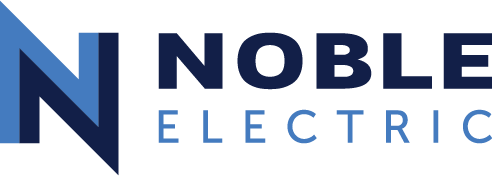Thermal Imaging Maintenance Checklist for Industrial Electrical Panels
Understanding Thermal Imaging in Industrial Settings
Thermal imaging is a non-invasive diagnostic technique that uses infrared cameras to detect heat patterns in electrical components. This method is particularly beneficial in identifying hotspots that indicate potential failures, such as overloaded circuits or loose connections, without interrupting operations.
Why Thermal Imaging?
Thermal imaging serves as a proactive maintenance strategy, enabling facilities to address issues before they escalate into costly failures. By detecting anomalies early, industries can reduce downtime, extend equipment life, and enhance safety.
Key Components of a Thermal Imaging Maintenance Checklist
Creating a consistent and detailed checklist is essential for effective thermal imaging maintenance. Below are the critical components to consider:
1. Schedule Regular Inspections
Establish a routine inspection schedule, ideally quarterly, to ensure ongoing monitoring of electrical panels. Consistency is key to tracking and comparing thermal images over time, allowing for trend analysis and early detection of anomalies.
2. Identify Critical Equipment
Focus on high-voltage systems, custom electrical installations, and equipment integral to operations. For instance, Noble Electric emphasizes the importance of inspecting structured cabling installations, like Cat6 and fibre optics, which are vital for industrial communications.
3. Capture Baseline Images
Capture baseline thermal images of all critical components during initial inspections. These images provide a reference point for future comparisons, enabling the detection of subtle changes that may indicate emerging issues.
4. Analyze Temperature Variations
While analyzing thermal images, pay attention to temperature variations across components. A consistent rise in temperature can signal issues such as poor connections or insulation degradation, common in high-mast lighting systems in Winnipeg.
5. Document Findings
Maintain thorough records of all thermal imaging inspections, including images, temperature readings, and identified anomalies. Documentation aids in compliance with safety standards such as CSA C22.1‑21 and facilitates informed decision-making.
Practical Applications and Case Studies
Noble Electric has implemented thermal imaging across various projects in Manitoba, from mining sites in Brandon to municipal infrastructure in Winnipeg. These real-world applications offer valuable insights:
Case Study: Mining Industry Electrical Contracting
In a project involving high-voltage electrical systems at a mining site, Noble Electric utilized thermal imaging to identify a hotspot in a motor control panel. The early detection prevented a potential failure, saving significant repair costs and operational downtime.
Case Study: Medical-Grade Electrical Installations
Thermal imaging was employed in a hospital project to ensure compliance with stringent standards. By identifying hotspots in medical-grade installations, corrective measures were taken promptly, ensuring patient safety and system reliability.
Common Pitfalls and How to Avoid Them
While thermal imaging is a powerful tool, there are common pitfalls to be aware of:
1. Inadequate Training
Ensure that technicians are adequately trained in thermal imaging techniques and equipment use. Noble Electric provides specialized training to its staff to maintain high standards of inspection quality.
2. Ignoring Environmental Factors
Environmental conditions such as ambient temperature and wind can affect thermal readings. Inspections should be conducted under stable conditions to ensure accuracy.
3. Overlooking Small Anomalies
Even minor temperature deviations can indicate serious underlying issues. It’s crucial to investigate all anomalies thoroughly to prevent future failures.
Future Trends and Innovations in Thermal Imaging
As technology advances, thermal imaging continues to evolve. Innovations such as AI-driven analysis and integration with SCADA systems are enhancing predictive maintenance capabilities. These advancements promise to further reduce operational risks and maintenance costs, aligning with energy efficiency solutions and compliance retrofits.
Actionable Next Steps for Implementing Thermal Imaging
To leverage thermal imaging effectively, consider the following steps:
- Partner with experienced electrical contractors like Noble Electric for comprehensive inspections.
- Invest in training for your maintenance team to ensure accurate data interpretation.
- Incorporate thermal imaging into your regular maintenance strategy to maximize equipment lifespan and reliability.
Thermal imaging is a vital component of modern industrial maintenance strategies. By following this checklist and engaging with expert services, industrial operations in Winnipeg and beyond can achieve enhanced safety, reliability, and efficiency.
This article is for general informational purposes only and should not be relied on as legal, safety, or engineering advice. Always consult a qualified professional and relevant local regulations.
